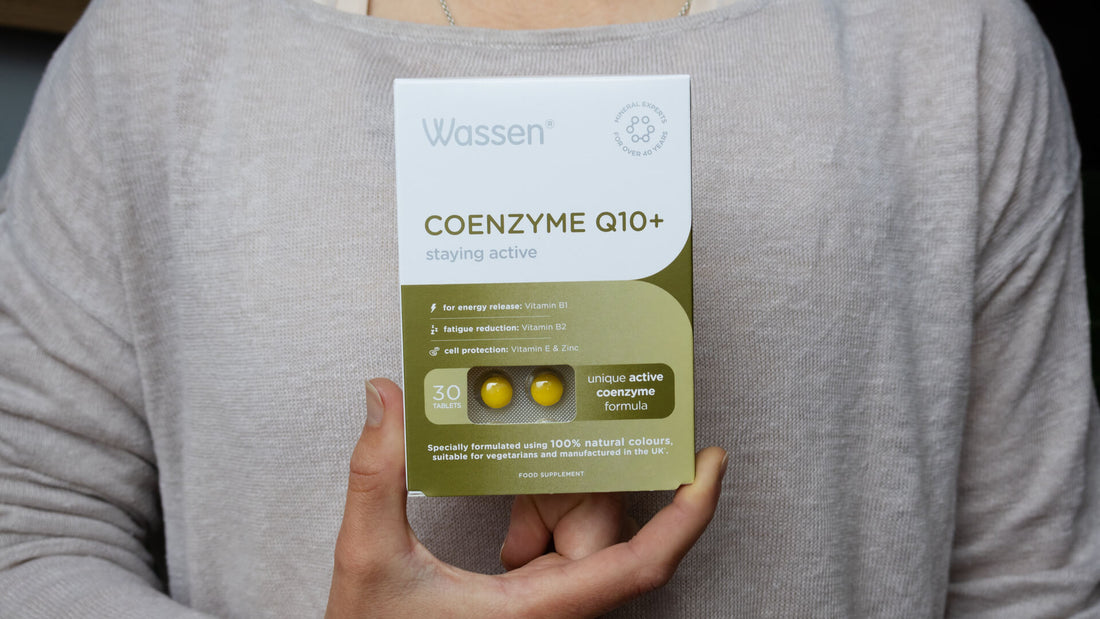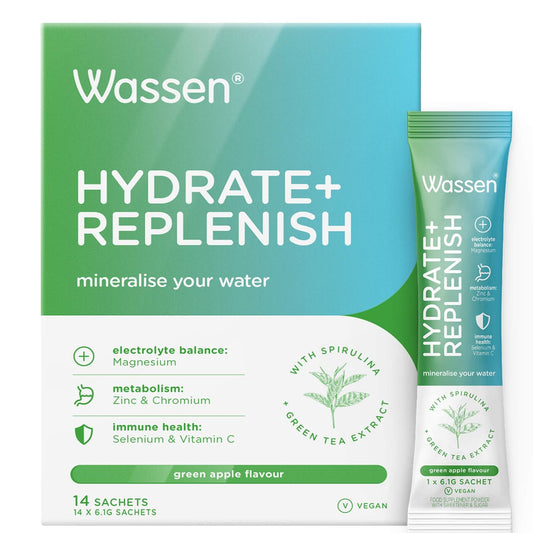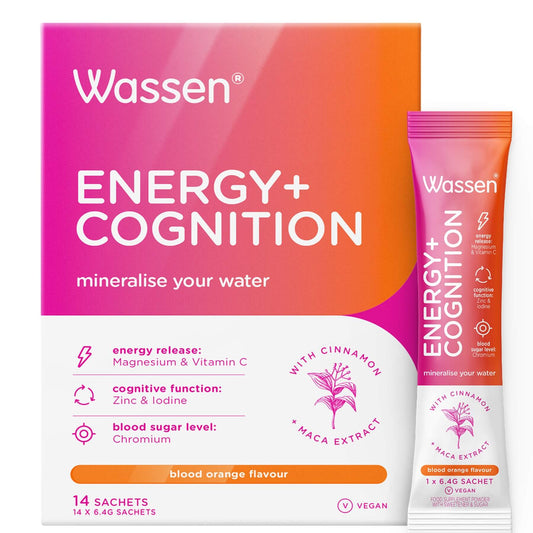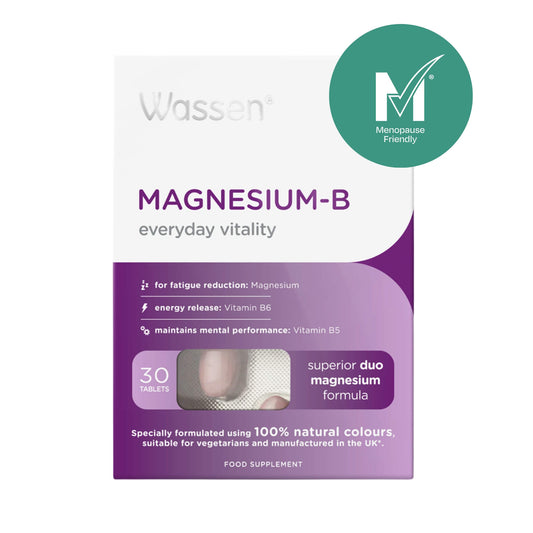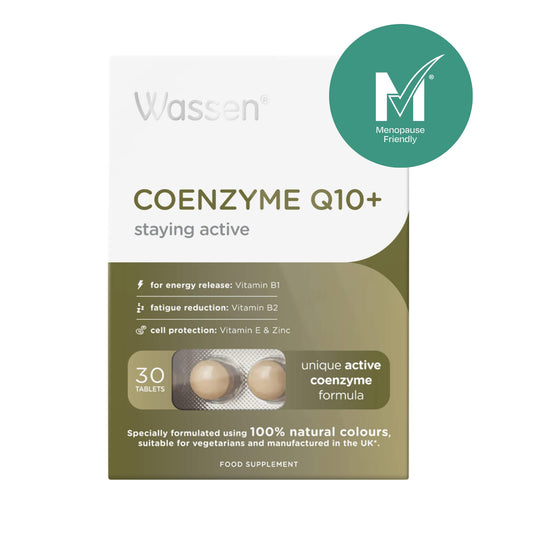What is the role of Coenzyme Q10 in the body?
Our bodies rely on cellular energy to function, keeping us alive. Cellular respiration describes the generation energy within cells in the form of Adenosine Triphosphate (ATP). This process requires a fuel source, which is most often glucose from carbohydrate in the diet, as well as oxygen. Adenosine Ddiphosphate (APD), phosphate, carrier molecules and enzymes are also essential for this process.
While Coenzyme Q10 (CoQ10) isn't essential for the bare minimum steps of cellular respiration, it plays a significant role in optimizing the process. As well as being involved in the generation of ATP, CoQ10 is a powerful antioxidant, protecting cells from oxidative stress, and can support healthy blood flow. It is also believed to regenerate inactive vitamin E back to its antioxidative state in the body.[1]
What are the benefits of supplementing with Coenzyme Q10?
CoQ10 is a lipid-soluble, vitamin-like compound found naturally in the body. However, it’s production can be impacted by age, health conditions and other factors.[2] Lower levels of circulatory CoQ10 reduce the body’s total antioxidant capacity (TAC), which is a marker of how well the body can respond to free radicals caused by injury or illness.[3] Supplementing with CoQ10 can increase its availability in the body, enabling it to enhance cellular respiration and antioxidant processes in the body.
Enabling these cellular reactions to occur can improve health outcomes, including UV skin damage[4], blood flow[5] and cardiovascular health, as well as cholesterol.[6] Studies have also found the CoQ10 can support exercise and athletic training capacity.[7,8]
What other nutrients does Coenzyme Q10 contain?
Vitamin E
The main benefits of Vitamin E come from avoiding a deficiency, and this can be achieved by maintaining small daily intakes.[9] Vitamin E is best known for its role as an antioxidant, protecting cells from oxidative stress and damage caused by free radicals. When oxidative stress occurs, cells structures become damaged and this can trigger the onset of diseases such as cancer, cardiovascular disease, dementia and arthritis. Keeping oxidative stress levels low and the body’s TAC high is important for disease prevention.[10]
Thiamine
Thiamine is a B-vitamins that acts as a co-factor for a number of enzymes involved in energy-yielding metabolism (ATP synthesis).[11] The brain is vulnerable to thiamine deficiency due to its reliance on ATP production.[12] Thiamine is also important for nervous system health (preventing beriberi), as well as the normal function of the heart.[13]
Riboflavin
Riboflavin is a second B-vitamin that also acts as a cofactor in enzymes involved in energy-yielding metabolism and the protection of cells from oxidative stress. When riboflavin levels are low, symptoms can include weakness and fatigue. Riboflavin is also important for the maintenance of normal red blood cells, which carry oxygen around the body.[14]
Zinc
Zinc is an essential mineral involved in enabling hundred of enzyme reactions. Therefore, it is involved in a number of processes in the body that link to full body health. Zinc is important for carbohydrate metabolism, enabling the generation of glucose for cellular respiration. It is also involved in protecting cells from oxidative stress, preventing the build-up of reactive oxygen species that can cause damage to the cells of organisms and limit how well they function, which can lead to disease.[15]
References:
[1] https://pubmed.ncbi.nlm.nih.gov/30285386/
[2] https://examine.com/supplements/coenzyme-q10/
[3] https://examine.com/outcomes/total-antioxidant-capacity-tac/
[4] https://pubmed.ncbi.nlm.nih.gov/27548886
[5] https://pubmed.ncbi.nlm.nih.gov/21388622
[6] https://pubmed.ncbi.nlm.nih.gov/36337001
[7] https://pubmed.ncbi.nlm.nih.gov/18272335
[8] https://pubmed.ncbi.nlm.nih.gov/22079391
[9] https://examine.com/supplements/vitamin-e/#examine-database
[10] https://www.ncbi.nlm.nih.gov/pmc/articles/PMC5551541/
[11] https://ec.europa.eu/food/food-feed-portal/screen/health-claims/eu-register
[12] https://www.ncbi.nlm.nih.gov/pmc/articles/PMC6459027/
[13] https://ods.od.nih.gov/factsheets/Thiamin-Consumer/
[14] https://ods.od.nih.gov/factsheets/Riboflavin-Consumer/
[15] https://ec.europa.eu/food/food-feed-portal/screen/health-claims/eu-register

